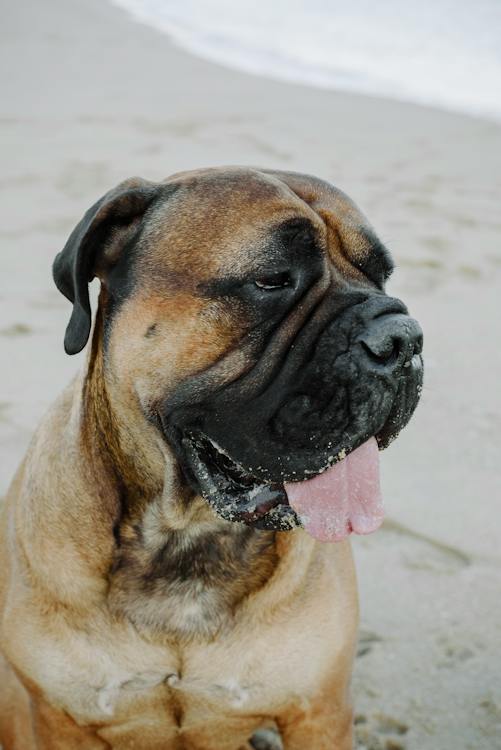Bullmastiff
Bulldogs and Mastiffs are both very fascinating breeds. These breeds are known for their large and powerful bodies, which is typical for working dogs. Crossing these two breeds would surely result in an incredible dog called the Bullmastiff.
The Bullmastiff is a dog with a clear distinction. Just by its name, it is an evident mixture of a bulldog and a mastiff. The results are lovely since this dog has a large body of mastiffs and the affection of Bulldogs. This extraordinary combination is what makes this dog the perfect family companion and guardian.
Because of the Bullmastiff’s intimidating appearance, it often works as a guard dog in houses, farms, and markets. This dog’s greatness gained recognition in different parts of the globe, wherein people see the Bullmastiff as a strong, intelligent, and confident protector.
Origins of the Bullmastiff
We can trace back the origins of the Bullmastiff to the mid-19th century. During this time, poachers were widespread in England, mainly in the vast country estates and game preserves. Despite poaching’s serious consequences, authorities didn’t succeed in stopping the poachers from intruding their land. Poachers would fight for their lives when captured since the death penalty was the main repercussion for those who were caught red-handed.
Gamekeepers realized the risk of protecting their land from poachers, which led to creating a large dog capable of guarding their place. They knew that they needed a dog that is massive, agile, and confident to pursue anyone trying to intrude the area.
Thankfully, breeders succeeded in creating a remarkable dog that could get the job done. They came with a combination of sixty percent Mastiff and forty percent Bulldog – producing a large dog equipped with intelligence, loyalty, confidence, and power. The breed showed a physique that is enough to intimidate intruders.
Because of the breed’s incredible features, gamekeepers developed it further to compete with other Bullmastiffs. Furthermore, this competition is nothing like the blood sport that originated from hundreds of years. The competition exhibits Bullmastiff’s great qualities on the stage, which led to the popularizing dog shows in England. Over the years, the Bullmastiff gained recognition worldwide, along with the standardization of its breed.
Characteristics of the Bullmastiff
Height: 24 – 27 inches
Weight: 100 – 130 pounds
Life Expectancy: 7 – 9 years
Hypoallergenic: No
As mentioned earlier, the Bullmastiff is a large breed that could stand up to twenty-seven inches tall and weighs up to 130 pounds. Its appearance shows a muscular and massive body that could easily intimidate anyone just by looking at it. However, despite its relatively large size, it is still smaller compared to the Mastiff.
Besides its Mastiff-like body, the Bullmastiff’s face has its resemblance to the Bulldog – mainly its broad head, dark eyes, V-shaped ears, and wrinkles. All of these features contribute to making the Bullmastiff’s appearance unique.
Moreover, the Bullmastiff is not only a fascinating breed because of its looks. This dog is incredibly intelligent, alert, and confident, making it a perfect guard dog. Its confidence suits well for protecting houses and farms, keeping intruders at bay. The Bullmastiff is devoted and loyal to its family, while it would never back down against an intruder. This breed is strong enough to pin down trespassers without mauling them. It is an excellent combination of gentleness, loyalty, and tenacity.
It is best to train the Bullmastiff while still young since it is always easier to control during this stage. With proper training and care, the Bullmastiff is a remarkable family companion and guardian.
Caring for the Bullmastiff
Feeding the Bullmastiff is not the same as any other dog. Experts recommend that adult dog food works best for puppies to slow down its growth. It is because Bullmastiffs tend to grow more rapidly compared to other breeds. So be extra careful when feeding them to avoid exhausting their body. Furthermore, overfeeding could cause bloatedness and obesity.
These conditions give them an uncomfortable feeling, or worse, could lead to other medical problems. Besides feeding them, it is also best to provide them with regular exercise to keep their bodies fit and healthy. Both diet and exercise are contributing factors to keeping their coat looking its best.

